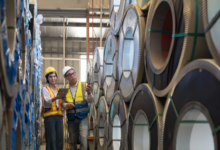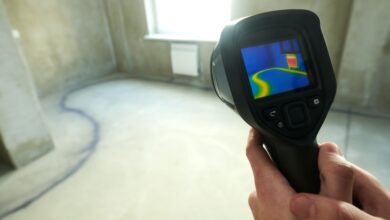The Evolution of Stucco Tools: From Ancient Times to Modern Day

Stucco, a versatile building material cherished for its durability and aesthetic appeal, has been a cornerstone of construction for centuries. As civilizations have evolved, so too have the tools used to manipulate and apply this remarkable substance. From rudimentary implements used by ancient artisans to sophisticated machinery employed in modern construction projects, the evolution of stucco tool reflects the ingenuity and resourcefulness of builders throughout history.
Ancient Origins of Stucco Tools
In ancient times, stucco was crafted using basic tools fashioned from natural materials such as wood, stone, and clay. Artisans relied on simple implements like wooden trowels and hand-carved spatulas to mix and apply stucco plaster onto surfaces. These early tools, while rudimentary by today’s standards, laid the foundation for the development of more advanced techniques in stucco application.
Innovations in Stucco Tools Through the Ages
As civilizations flourished and architectural styles evolved, so did the tools used in stucco work. The ancient Egyptians, renowned for their mastery of building techniques, employed refined tools such as polished wooden floats and metal scrapers to achieve smooth and decorative stucco finishes. Similarly, the Greeks and Romans further refined stucco application methods, introducing new tools like the fresco brush for intricate detailing and the stucco comb for creating textured patterns.
Renaissance Revival of Stucco Craftsmanship
During the Renaissance period, stucco experienced a resurgence in popularity as architects and artisans embraced classical design principles. Elaborate stucco embellishments adorned palaces, cathedrals, and public buildings, with craftsmen utilizing an array of specialized tools to achieve intricate designs. Ornate moulds, sculpting chisels, and detailing brushes became indispensable instruments in the hands of skilled stucco artisans, elevating the craft to new heights of artistry.
Industrialization and Modernization of Stucco Tools
The advent of industrialization revolutionized stucco production and application methods, paving the way for mass construction projects and standardized building practices. Mechanical mixers, pneumatic sprayers, and power-driven trowels streamlined the stucco application process, increasing efficiency and productivity on construction sites. With advancements in materials science and engineering, modern stucco tools have become more durable, ergonomic, and precise, empowering contractors to achieve high-quality finishes with greater speed and accuracy.
Read also: The Psychology Behind Memorable Characters
Contemporary Trends in Stucco Tool Design
In the 21st century, stucco tools continue to evolve in response to emerging trends in architecture, sustainability, and technology. Eco-friendly materials, such as low-VOC coatings and recycled aggregates, are gaining popularity among environmentally conscious builders, driving innovation in stucco tool design. Digital modeling software and 3D printing technology are also revolutionizing the way stucco patterns and textures are created, offering architects and designers unprecedented creative freedom in building design.
FAQs:
1. What are the essential tools for stucco application?
Essential stucco tools include trowels, floats, scrapers, brushes, and sprayers. Depending on the specific project requirements, additional tools such as scaffolding, ladders, and safety gear may also be necessary.
How do I maintain and clean stucco tools?
Proper maintenance of stucco tools involves regularly removing dried plaster residue and debris, as well as lubricating moving parts to prevent rust and corrosion. Cleaning tools with warm, soapy water and a stiff brush can help prolong their lifespan and ensure optimal performance.
Can stucco tools be used for other applications besides stucco work?
While stucco tools are primarily designed for plastering and rendering surfaces with stucco, many of them can be adapted for use in other construction and DIY projects. For example, trowels and floats may be used for applying mortar, grout, or tile adhesive, while scrapers and brushes are versatile tools for surface preparation and cleaning.
Conclusion:
The evolution of stucco tools is a testament to the enduring legacy of this ancient building material and the craftsmanship of those who work with it. From humble beginnings in antiquity to the cutting-edge innovations of the present day, stucco tools have played a vital role in shaping the built environment and preserving architectural heritage. As we look to the future, certifiedmtp.com remains committed to providing the highest quality materials testing equipment, including tools essential for stucco application, ensuring that builders and artisans have access to the tools they need to bring their creative visions to life.





